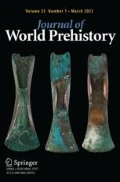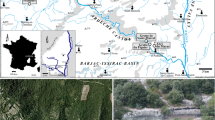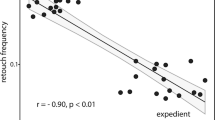Abstract
Study of the Iberian Copper Age has experienced a remarkable upheaval in the last two decades. The discovery in central and southwestern Iberia of a significant number of ditched enclosures, a site type almost unknown in this region until the mid 1990s, has opened up new lines of research. Particularly interesting is the existence of some exceptionally large sites. Largest of all is Valencina de la Concepción (Seville, Spain), covering an area of 450 ha and featuring several outstanding megalithic monuments, thousands of pits and material assemblages revealing middle and long distance contacts. In this paper we discuss the implications of the Valencina mega-site for the study of settlement variability, monumentality and population aggregation as key phenomena in the rise in social complexity in Copper Age Iberia.
Resumen
El estudio de Edad del Cobre ibérica ha experimentado una notable convulsión en las dos últimas décadas. El descubrimiento, fundamentalmente en Iberia central y suroccidental, de un número importante de recintos de fosos, una categoría de sitio que hasta mediados de los años 1990 era casi desconocida, ha abierto nuevas vías de investigación. De particular interés es la existencia de algunos sitios de tamaño excepcionalmente grande. Tal es el caso de Valencina de la Concepción (Sevilla), con 450 ha de extension, varios monumentos megalíticos de gran porte, miles de estructuras negativas y una cultura material que revela contactos a media y larga distancia. En este artículo se debaten las implicaciones de los descubrimientos recientemente realizados en el mega-sitio de Valencina para el estudio de la variabilidad en la forma de los asentamientos, la monumentalidad y la agregación de población como fenómenos clave de la expansion de la complejidad social que se da en la Edad del Cobre ibérica.

Map: Manuel Eleazar Costa Caramé

Map: David W. Wheatley

Map: Leonardo García Sanjuán and Manuel Eleazar Costa Caramé

Photographs: Antonio Acedo

Map: Leonardo García Sanjuán and Manuel Eleazar Costa Caramé


Photographs: Miguel Ángel Blanco de la Rubia

Diagram: Chris Scarre
Similar content being viewed by others
References
Algaze, G. (2008). Early Mesopotamia at the dawn of civilization: The evolution of an urban landscape. Chicago: University of Chicago Press.
Almagro Basch, M., & Arribas Palau, A. (1963). El poblado y la necrópolis megalíticos de Los Millares (Santa Fé de Mondujar, Almería). Madrid: Consejo Superior de Investigaciones Científicas.
Andersen, N. H. (1997). Sarup. In The Sarup enclosures (Vol. 1). Moesgaard: Jysk Arkaeologisk Selskab.
Andersen, N. H. (2016). The clustering of megalithic monuments around the causewayed enclosures at Sarup on Funen, Denmark. In L. Laporte & C. Scarre (Eds.), The megalithic architectures of Europe (pp. 127–135). Oxford: Oxbow Books.
Arribas Palau, A. (1959). El urbanismo peninsular durante el Bronce primitivo. Zephyrus, 10, 81–128.
Bosch Gimpera, P. (1969). La cultura de Almería. Pyrenae, 5, 47–93.
Burnez, C., & Louboutin, C. (2002). The causewayed enclosures of western-central France from the beginning of the fourth to the end of the third millennium. In G. Varndell & P. Topping (Eds.), Enclosures in Neolithic Europe: Essays on causewayed and non-causewayed sites (pp. 11–27). Oxford: Oxbow Books.
Chapman, R. (1995). Urbanism in copper and bronze age Iberia? In B. Cunliffe & S. Keay (Eds.), Social complexity and the development of towns in Iberia. Proceedings of the British Academy (Vol. 86, pp. 29–46). London: British Academy.
Cruz-Berrocal, M., García Sanjuán, L., & Gilman, A. (Eds.). (2013). The Prehistory of Iberia: Debating early social stratification and the state. New York: Routledge.
Cunliffe, B., & Keay, S. (Eds.). (1995). Social complexity and the development of towns in Iberia. Proceedings of the British Academy (vol. 86). London: British Academy.
Escacena Carrasco, J. L., Rodríguez De Zuloaga Montesino, M., Ladrón de Guevara Sánchez, I. (1996). Guadalquivir salobre: Elaboración prehistórica de sal marina en las antiguas bocas del río. Sevilla: Confederación Hidrográfica del Guadalquivir.
García Sanjuán, L. (2013). El asentamiento de la Edad del Cobre de Valencina de la Concepción: estado actual de la investigación, debates y perspectivas. In L. García Sanjuán, J. M. Vargas Jiménez, V. Hurtado Pérez, M. T. Ruiz Moreno, & R. Cruz-Auñón Briones (Eds.), El asentamiento prehistórico de Valencina de la Concepción. Investigación y tutela en el 150 aniversario del descubrimiento de la pastora (pp. 21–59). Sevilla: Universidad de Sevilla.
García Sanjuán, L. (2017). Farming economy and wealth economy in the Copper Age of the Lower Guadalquivir River: Debating strategic resources at Valencina de la Concepción (Seville, Andalusia, Spain). In M. Bartelheim, P. Bueno Ramírez, & M. Kunst (Eds.), Key resources and socio-cultural developments in the Iberian Chalcolithic (pp. 129–148). Tübingen: University of Tübingen.
García Sanjuán, L., Cáceres Puro, L., Costa Caramé, M. E., Díaz-Guardamino-Uribe, M., Díaz-Zorita Bonilla, M., Fernández Flores, A., et al. (under review). Assembling the dead, gathering the living: Radiocarbon dating and Bayesian modelling for Copper Age Valencina de la Concepción (Sevilla, Spain). Journal of World Prehistory.
García Sanjuán, L., Fernández Flores, A., & Díaz-Zorita Bonilla, M. (2016). Montelirio: Valoración e Interpretación de una tumba excepcional. In A. Fernández Flores, L. García Sanjuán, & M. Díaz-Zorita Bonilla (Eds.), Montelirio: Un gran monumento megalítico de la Edad del Cobre (pp. 503–553). Sevilla: Junta de Andalucía.
García Sanjuán, L., & Murillo-Barroso, M. (2013). Social complexity in Copper Age southern Iberia (c. 3200–2200 cal BC): Reviewing the ‘state’ hypothesis at Valencina de la Concepción (Seville, Spain). In M. Cruz Berrocal, L. García Sanjuán, & A. Gilman (Eds.), The prehistory of Iberia: Debating early social stratification and the state (pp. 119–140). New York: Routledge.
Gaydarska, B. (2017). Introduction: European Prehistory and Urban Studies. Journal of World Prehistory. doi:10.1007/s10963-017-9107-6.
Jennings, J. (2016). Killing civilization: A reassessment of early urbanism and its consequences. Albuquerque: University of New Mexico Press.
Joussaume, R., & Large, J. E. (Eds.). (2014). Enceintes néolithiques de l’ouest de la France de la Seine à la Gironde. Chauvigny: Association des Publications Chauvinoises.
Kuijt, I. (2000). People and space in early agricultural villages: Exploring daily lives, community size, and architecture in the late Pre-Pottery Neolithic. Journal of Anthropological Archaeology, 19, 75–102.
Laporte, L., Bizien-Jaglin, C., Wattez, J., Guyodo, J. N., Barreau, J. B., Bernard, Y., et al. (2015). Another brick in the wall: Fifth millennium BC earthen-walled architecture on the Channel shores. Antiquity, 89, 800–817.
Morán Hernández, E. (2010). Spatial organisation of the Alcalar Copper Age settlement (Algarve, Portugal). In A. C. Valera & L. Shaw Evangelista (Eds.), Proceedings of the XV UISPP Congress (Lisbon, September 4–9 2006). Session WS29: The idea of enclosure in recent Iberian prehistory. BAR International Series 2124 (pp. 161–167). Oxford: Archaeopress.
Murillo-Barroso, M., Costa Caramé, M. E., Díaz-Guardamino Uribe, M., García Sanjuán, L., & Mora Molina, C. (2015). A reappraisal of Iberian Copper Age goldwork: Craftsmanship, symbolism and art in a non-funerary gold sheet from Valencina de la Concepción. Cambridge Archaeological Journal, 25(3), 565–596.
Parker Pearson, M. (2012). Stonehenge: Exploring the greatest Stone Age mystery. London: Simon & Schuster.
Savory, H. (1968). Spain and Portugal: The prehistory of the Iberian Peninsula. London: Thames & Hudson.
Scarre, C. (1998). ‘Arenas of action?’ Enclosure entrances in Neolithic western France c. 3500–2500 BC. Proceedings of the Prehistoric Society, 64, 115–137.
Scarre, C. (2013). Social stratification and the state in prehistoric Europe: The wider perspective. In M. Cruz Berrocal, L. García Sanjuán, & A. Gilman (Eds.), The prehistory of Iberia: Debating early social stratification and the state (pp. 381–405). London: Routledge.
Service, E. (1984). Los orígenes del estado y la civilización: El proceso de la evolución cultural. Madrid: Alianza. (First English Edition 1975.)
Valera, A. C., & Shaw Evangelista, L. (2014). Anthropomorphic figurines at Perdigões enclosure: Naturalism, body proportion and canonical posture as forms of ideological language. European Journal of Archaeology, 17, 286–300.
Viner, S., Evans, J., Albarella, U., & Parker Pearson, M. (2010). Cattle mobility in prehistoric Britain: Strontium isotope analysis of cattle teeth from Durrington Walls (Wiltshire, Britain). Journal of Archaeological Science, 37, 2812–2820.
Wattenmaker, P. (2009). States, landscapes and the urban process in upper Mesopotamia: Inter-polity alliances, competition and ritualized exchange. In S. E. Falconer & C. L. Redman (Eds.), Polities and power: Archaeological perspectives on the landscapes of early states (pp. 106–124). Phoenix: The University of Arizona Press.
Zafra de la Torre, N., Hornos Mata, F. & Castro López, M. (1999). Una macro-aldea en el origen del modo de vida campesino: Marroquíes Bajos (Jaén) c. 2500–2000 cal. ANE. Trabajos de Prehistoria, 56 (1), 77–102.
Author information
Authors and Affiliations
Corresponding author
Rights and permissions
About this article
Cite this article
García Sanjuán, L., Scarre, C. & Wheatley, D.W. The Mega-Site of Valencina de la Concepción (Seville, Spain): Debating Settlement Form, Monumentality and Aggregation in Southern Iberian Copper Age Societies. J World Prehist 30, 239–257 (2017). https://doi.org/10.1007/s10963-017-9107-6
Published:
Issue Date:
DOI: https://doi.org/10.1007/s10963-017-9107-6
Keywords
- Iberia
- Copper Age
- Mega-sites
- Ditched enclosures
- Megalithic monuments
- Population aggregation
- Early urbanism
- Social complexity




